Motorcycle Investor mag
Subscribe to our free email news
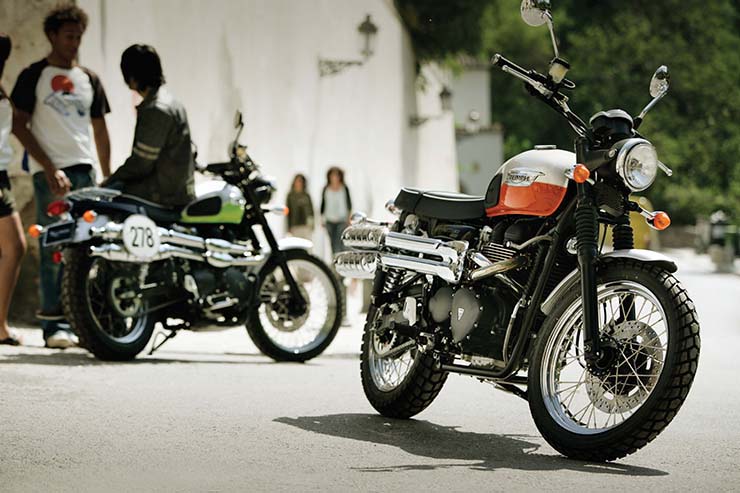
Profile – Triumph 865 Scrambler series
by Guy ‘Guido’ Allen
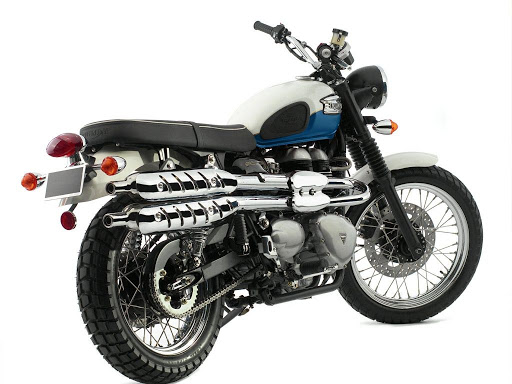
First-gen Fun
It may have been superseded by the 1200, but Hinckley’s 865 Scrambler series still has a lot to offer
Is that the time already? Triumph’s 2006 launch of the Scrambler re-awakened a long redundant market niche – risky, but the timing was pretty good. Scrambles as a motorcycle sport really had its heyday up until the early 1970s, when off-road racing was rapidly becoming more focussed and specialised.
There was a time when mildly-modded road bike was a plausible (if not ideal) prospect for your local scrambles meet. And we did see makers tackle the sector with scrambles or desert-racer inspired machines. Honda’s CL series twins of the 1960s were a good example, as was Triumph’s own Tiger Trail of the early 1980s.
In reality, the modern Scrambler has as much to do with off-road racing as your average skateboard. The notion that it harks back to the good old days (1964) when Steve McQueen competed in the ISDT on a Triumph twin is romantic but stretches credibility.
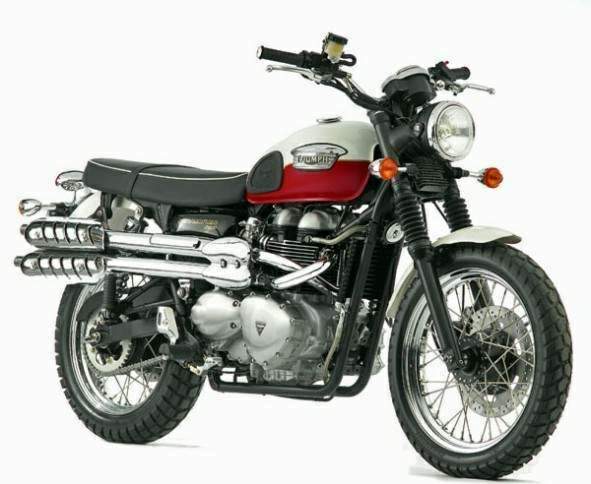
Here’s a slice of the Triump PR blurb from when the bike was launched: “The Scrambler represents a fresh take on the iconic bikes from Triumph's past. Combining inspiration from the relaxed culture and laid back attitude of sunny California with the chic approach of Southern Europeans, the Scrambler redefines the off-road machines made famous by ’60s thrill seekers such as Steve McQueen and places many elements of their robust, dual purpose style into a contemporary urban context. The authentic styling of the Scrambler is what makes the motorcycle so unique, yet the technology is as modern as it can be.”
So, what’s a Scrambler? Essentially it began life as a modded version of the first-generation Hinckley Bonneville twin. Triumph changed the engine to a 270 degree firing order to give it a more ‘v-twin’ feel, and jacked the bike up noticeably while giving it less cruiser-like steering geometry.
The second year series gained a black-finished engine, while in 2008 it scored fuel injection, carefully disguised as carburetors. By 2008, the instrumentation changed from a standard single speedo to a more familiar twin binnacle set-up that included a tacho.
To complete the off-road effect, you scored Bridgestone Trailwing tyres, a big wide set of handlebars and could add some dress-up gear such as a bash plate.
From day one, Triumph made sure the punter was tempted with a big range of accessories. You could order young Mr McQueen’s old race number (278), an accessory tacho that mounted behind the steering head opposite the speedo, open exhausts, luggage rack - pretty much anything you little heart desired including, possibly, spray-on mud. Okay, maybe I made up that last item.
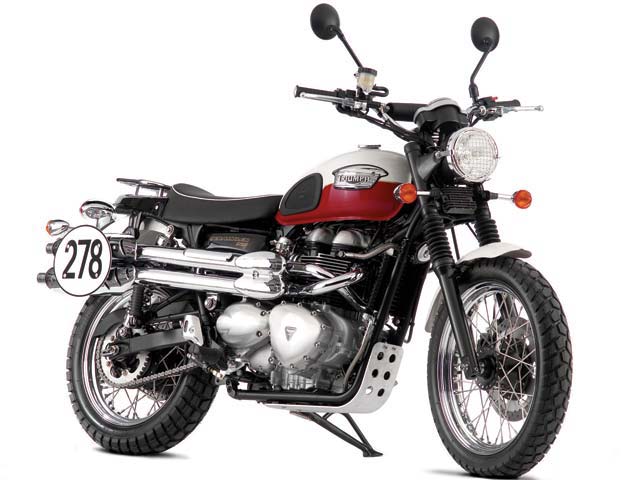
It was never meant to be a tyre-shredding monster. The original 54 horses was bumped to a heady 59 with fuel injection, which was powering a 205kg (dry) lump. It’s enough to make the bike lively without over-powering the chassis.
As a package, I’d rate this as the pick of the Bonneville-derived litter when it comes to handling. That is if you ditch those tyres and fit decent road rubber. The faux desert racer rubber might look the part, but is lacking in feel in most situations and has poor grip in the wet.
Once you do that, you find you have a bike that steers faster than a Bonneville and is nice and light to tip in – thanks in part to those wide handlebars. (Chassis specs include a 27.5 degree rake and 105mm of trail.) This is one of those toys that’s pretty handy around town and is an absolute hoot to point at a set of curves in the backroads.
The suspension does a reasonable job, even if it’s basic with preload adjustment only on the rear.
Braking is handled by single discs at each end, with a two-piston caliper up front. It fits the low-spec/low weight look, but is really only adequate rather than great.
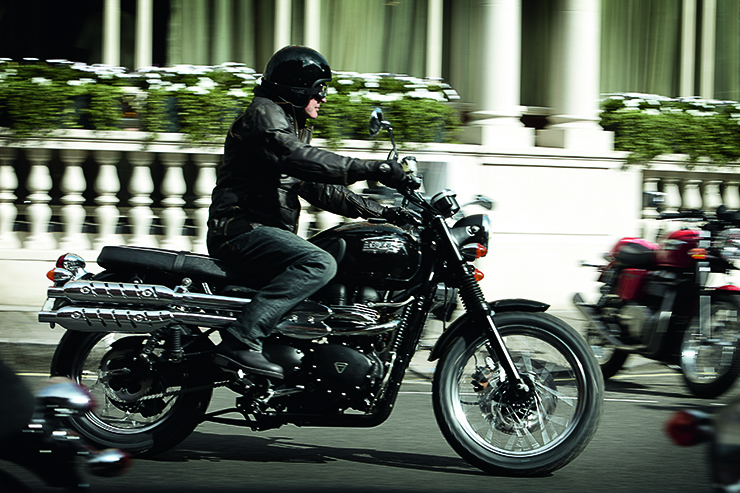
My only gripe with these things is with the seat. It’s flat and slim, which fits the look but isn’t so good for long distances in the saddle. If it were mine, I’d be heading for the nearest auto trimmer to get the foam upgraded.
For most folk the engine is a highlight. There is divided opinion over the 270 degree firing order – some people think the whole idea is a wank, while others like the feel. I fall into the latter camp. It’s shared with the America and has a nice relaxed beat to it that’s a little distinctive. Max torque chimes in at 5000rpm on the carburetor model and 4700 on the injected, so you really don’t have to wring its neck to get the best out of the thing.
The power ‘jump’ in the injected model is not really noticeable from the saddle and, really, there’s bugger all to pick between the two units when it comes to performance.
Meanwhile the bike runs a relatively light clutch and a willing enough gearbox.
One of the controversies among Triumph Hinckley collectors was the progressive opening of three factories in Thailand, from 2002. The assembly unit (the second) started up in 2006, about the time when Scrambler was launched, and it was finishing 865cc bikes there.
I did recently see an early Scrambler advertised as British-assembled, before assembly switched to Thailand – clearly the seller saw this as adding value. This is a bit of a tough one, as the factory is very much British-run. It’s not something I’d lose a lot of sleep over, but it is the sort of detail that collectors will obsess about.
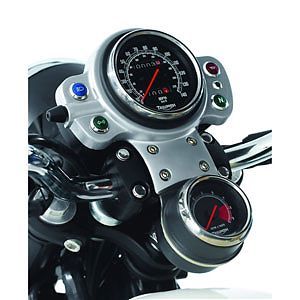
So which model is the most desirable? I like the original white/red or white/blue colours schemes and the first edition of anything its usually the most valuable. It was always a source of huge annoyance for me that the tacho was an accessory and I wouldn’t buy a first model without one or at least knowing where one could be obtained and at what price. It may seem petty, but it will impact resale further down the track.
From there, the whole decision is based on condition. Factory accessories are fine, aftermarket ones will reduce value.
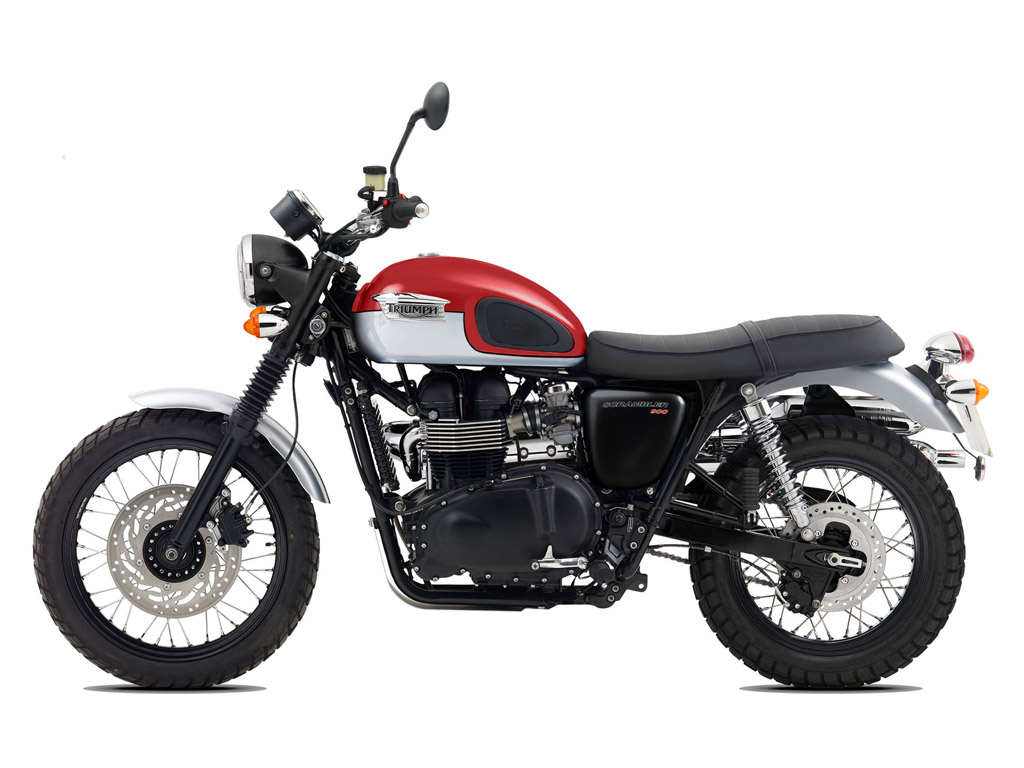
Something that interests me is there are a few models like this that may not yet have reached collector status, but are certainly holding there own when it comes to resale. The Scrambler is one and another is the Kawasaki W650/800 series.
Used Scramblers are holding their prices much better than the equivalent Bonneville and are actually a bit thin on the ground. Good first edition models only pop up on the market occasionally and I’m seeing relatively low mile versions (say up to 30,000km) offered from around $7000, though prices for later versions can climb to over $10k mark depending on year and condition.
Will they be a collector piece? This was not necessarily a ground-breaking model and it doesn’t really have a competition history. It came into being to satisfy what someone spotted as a contemporary trend for retro-style scramblers. Because of that, you have to hope there will be a desire long term for this style of bike.
Frankly you’re not betting sheep stations with this machine and they are a hell of a lot of fun. I reckon if nothing else they’ll hold up better than many of the alternatives. If you get a chance to throw a leg over a Scrambler, make sure you take the opportunity.
***
Star prices
Star power can make a hell of a difference to resale value. The highest price ever paid for a Scrambler was US$60,000 for the bike that starred in the movie Jurassic World. It was auctioned for charity and was ridden on screen by Chris Pratt.
The original
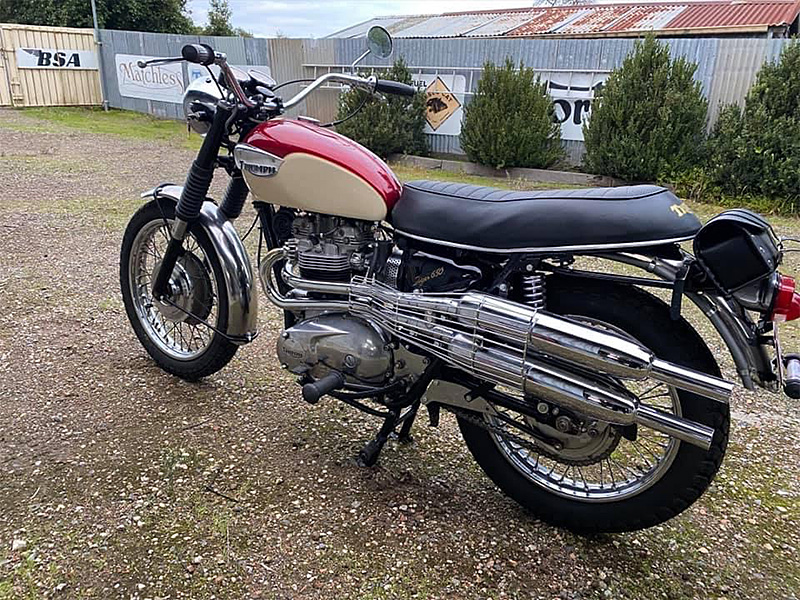
Triumph Meriden had its own versions of a Scrambler, long before Hinckley. For example, from 1962 to 1972, it built the T100C, aka Tiger Competition/Trophy.
The 500cc twin weighed just 153kg and claimed about 38 horse. See more about this model at the UK Triumph Owners Motorcycle Club.
The 1969-70 example above is owned by Phil Pilgrim of Union Jack Motorcycles.
For
Looks
Character
Fun to ride
Against
Seat isn’t great
Brakes are basic
Specs
2006 Triumph Scrambler (2008 fuel injected stats in brackets)
Production 2006-2016
Superseded by: 1200 Scrambler series from 2018
ENGINE:
TYPE: air-cooled, four-valves-per-cylinder, parallel twin with 270 degree firing order
CAPACITY: 865cc
BORE & STROKE: 90 x 68mm
COMPRESSION RATIO: 9.2:1
FUEL SYSTEM: twin CV carburetors (fuel injection post from 2008)
TRANSMISSION:
TYPE: five-speed, constant-mesh,
FINAL DRIVE: chain
CHASSIS & RUNNING GEAR:
FRAME TYPE: Steel cradle
FRONT SUSPENSION: Conventional telescopic fork
REAR SUSPENSION: Preload-adjustable twin shocks
FRONT BRAKE: 310mm disc with twin-piston caliper
REAR BRAKE: 255mm disc with twin-piston caliper
DIMENSIONS & CAPACITIES:
DRY WEIGHT: 205kg
SEAT HEIGHT: 825mm
WHEELBASE: 1500mm
FUEL CAPACITY: 16.6L
WHEELS & TYRES:
FRONT: 100/90-19
REAR: 130/80-17
PERFORMANCE:
POWER: 40kW @ 7000rpm (44kW @6800rpm)
TORQUE: 69Nm @5000rpm (69Nm @4750rpm)
-------------------------------------------------
Produced by AllMoto abn 61 400 694 722
Privacy: we do not collect cookies or any other data.

Archives
Contact




